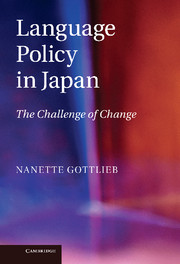Book contents
- Frontmatter
- Contents
- Preface
- Acknowledgments
- 1 Language ideology, planning and policy
- 2 The language needs of immigrants
- 3 Foreign languages other than English in education and the community
- 4 Technology and language policy change
- 5 National language policy and an internationalising community
- Conclusion
- Notes to the text
- References
- Index
2 - The language needs of immigrants
Published online by Cambridge University Press: 05 December 2011
- Frontmatter
- Contents
- Preface
- Acknowledgments
- 1 Language ideology, planning and policy
- 2 The language needs of immigrants
- 3 Foreign languages other than English in education and the community
- 4 Technology and language policy change
- 5 National language policy and an internationalising community
- Conclusion
- Notes to the text
- References
- Index
Summary
The ideology of monolingualism can prove enduringly resistant to change, regardless of what new practices might be introduced. Australia adopted official national policies on multiculturalism in the 1970s, and yet in a study of that country's language potential, Clyne (2005) stresses the disparity between what he calls Australia's ‘monolingual mindset’ at policy and institutional level and the on-the-ground multilingual reality of Australia's communities. The same is true of Japan, which is at a much earlier stage in the process: leaving aside the notable exception of the promotion of English, other policies and practices remain largely predicated on the ideological assumption that Japan is a monolingual nation, although there are signs that this is beginning to change. The following discussion will examine the linguistic needs of immigrants and their relationship to existing ideologies and policies.
When prominent Japanese journalist and political commentator Funabashi Yōichi wrote in a 2001 essay entitled ‘Japan's Moment of Truth’ that ‘new lines of debate are forming around the politics of Japanese identity’, he summarised astutely the issues surrounding Japan's current demographics. ‘This debate’, he continued, ‘takes the form of a clash between two visions of Japan's future: a more open, multilingual and multiracial Japan versus a homogenous, monolingual and mono-ethnic one.’ As we saw in Chapter 1, immigration, for so long a reluctant response to the demands of an ageing population and a low birth rate, is now a fact of life in Japan and is increasingly being recognised as such in both official and private sector discourse across the country. A report on Japan's future goals published in the year 2000 spoke encouragingly of immigration's potential to contribute to Japan's wellbeing and even suggested that Japan begin work on an ‘imin seisaku’ (migration policy) (Nijūisseiki Nihon no Kōsō Kondankai 2000). The use of the word ‘imin’ (migrant) here, Morris-Suzuki (2002: 169) points out, is significant because the more commonly used terminology of ‘shutsunyūkoku kanri seisaku’ (policy controlling entry and exit from Japan) refers more to border control than to any real acknowledgment of the existence and needs of migrants as people.
- Type
- Chapter
- Information
- Language Policy in JapanThe Challenge of Change, pp. 33 - 63Publisher: Cambridge University PressPrint publication year: 2011

